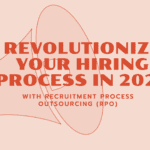Share article:
Table of Contents:
Introduction :
Popular Posts
-

 One-Time Placement (OTP): A Modern Approach to Recruitment, Employment, and Staffing23 Feb 2024
One-Time Placement (OTP): A Modern Approach to Recruitment, Employment, and Staffing23 Feb 2024 -

 Insights on Diversity & Inclusion in Workplaces and Best Practices09 Mar 2023
Insights on Diversity & Inclusion in Workplaces and Best Practices09 Mar 2023 -

 Building a Strong Employer Brand in the Digital Age09 Mar 2023
Building a Strong Employer Brand in the Digital Age09 Mar 2023 -


 Flexible Staffing: Key to Agile and Cost-Effective Workforce Solution17 Sep 2024
Flexible Staffing: Key to Agile and Cost-Effective Workforce Solution17 Sep 2024 -

 Strategies to Excel in the Virtual Job Market in India21 Nov 2023
Strategies to Excel in the Virtual Job Market in India21 Nov 2023
Understanding the Importance of Storytelling in Recruitment
Storytelling is a powerful tool that can humanize a brand, making it more relatable and attractive to potential employees. By sharing authentic stories about the company’s culture, values, and people, organizations can create an emotional connection with candidates.
Key Elements of a Compelling Employer Brand Story
1. Authenticity
Be Genuine: Share real stories about the company, its employees, and its culture. Avoid exaggerations and stick to the truth to build trust.
Employee Testimonials: Highlight stories from current employees. These testimonials provide a genuine perspective on what it’s like to work at the company.
2. Relatability
Showcase Everyday Moments: Highlight the day-to-day experiences of employees, not just the big achievements. This makes the story more relatable and believable.
Diverse Narratives: Share stories from employees at different levels and from various departments to show the diverse experiences within the company.
3. Emotion
Connect on an Emotional Level: Use stories that evoke emotions, such as pride, joy, or even challenges overcome. Emotional stories are more memorable and impactful.
Visual and Verbal Storytelling: Use a mix of written stories, videos, and images to appeal to different senses and make the stories more engaging.
4. Purpose
Highlight the Company’s Mission and Values: Show how the company’s mission and values are lived out through the actions and experiences of its employees.
Impact Stories: Share stories that demonstrate the company’s impact on the community, industry, or world. Purpose-driven stories attract candidates who seek meaningful work.
Steps to Craft an Employer Brand Story
Identify Core Values and Culture : Start by defining the company’s core values and culture. These should be the foundation of your employer’s brand story.
Gather Employee Stories: Conduct interviews with employees to gather a variety of stories. Focus on their experiences, challenges, achievements, and personal growth within the company.
Choose the Right Medium: Decide on the best medium for each story. Written articles, videos, podcasts, and social media posts each have their unique advantages. Use a mix to reach a broader audience.
Create a Narrative Arc: Structure each story with a clear beginning, middle, and end. This helps maintain the reader’s interest and makes the story more memorable.
Highlight Key Messages: Ensure each story reinforces key messages about the company’s values, culture, and opportunities for growth and development.
Share and Promote: Distribute the stories across various platforms, including the company’s career site, social media channels, and job listings. Encourage employees to share these stories within their networks.
Examples of Successful Employer Brand Stories
Airbnb : Airbnb’s employer brand story focuses on belonging and inclusion. Through employee testimonials and videos, the company showcases how its diverse team contributes to a global sense of belonging.
Google: Google shares stories of innovation and personal growth. Through its “Life at Google” series, the company highlights the unique journeys of its employees and the innovative projects they work on.
Patagonia: Patagonia’s stories emphasise its commitment to environmental sustainability. The company shares stories of employees passionate about protecting the planet and how they contribute to this mission through their work.
Summary :
In recruitment, storytelling is a powerful strategy to build a strong employer brand that attracts top talent. By sharing authentic, relatable, and emotionally engaging stories, companies can create a lasting impression on potential candidates. Remember, the best stories are those that reflect the true essence of the company and its people. Start crafting your employer brand stories today to connect with the talent of tomorrow.





